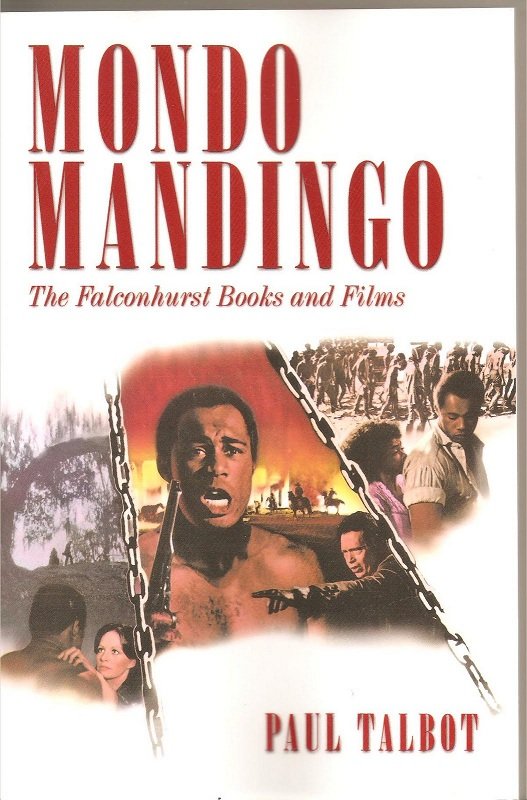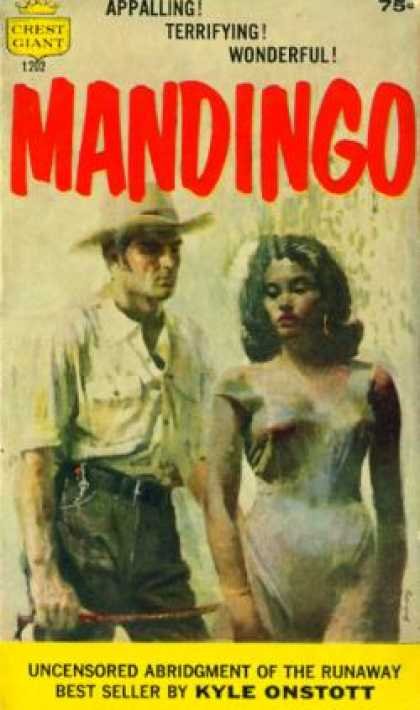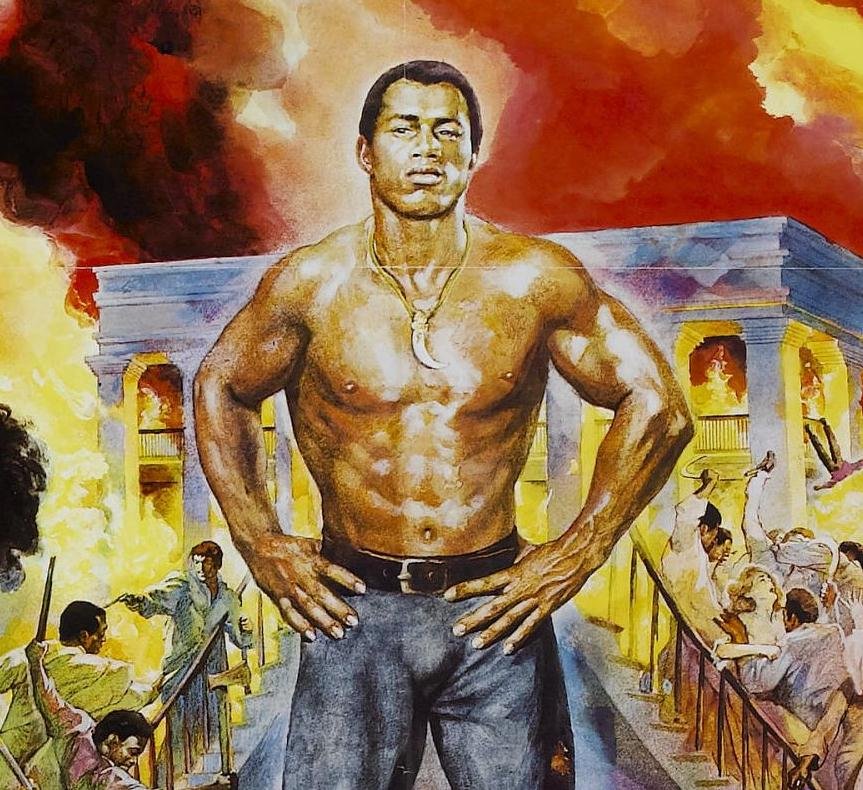MONDO MANDINGO: The Salacious Story Of Slavesploitation
Behind every eccentric, cultish phenomenon lurks a fascinating story of how that profitable oddity came to be. The stranger the phenomenon, the better the story. Thus, it seems reasonable to believe that there is an interesting story behind the Mandingo phenomenon, which spawned three decades' worth of books, two feature films and a legion of print and celluloid imitations. Rest assured, there is a great story to be told about this subject - and it can be found between the covers of Paul Talbot's compact yet informative tome, Mondo Mandingo.For those not in the know, Mandingo was an epic potboiler written by one Kyle Onstott, a 70 year-old dog-breeding expert who had never written fiction before. It told the story of life at a slave-breeding plantation in the Old South, larding it with jaw-dropping levels of sex and sadism and lingering on each shock with loving detail. It became a smash-hit shocker that spawned a string of sequels written by other authors and countless imitators. Movies also begin to cop from the  Mandingo playbook, leading to a big-budget Hollywood adaptation that earned the same mix of shock and success its parent novel received. A sequel followed, along with more imitators...In short, the Mandingo success story is a great example of a schlock phenomenon. Talbot gives it its due via a concise yet detailed exploration of the artifacts that fueled the phenomenon. The early sections of Mondo Mandingo explore the history of the books, starting with Onstott's background and the real-life stories that inspired his book (despite its trashiness, the book was carefully researched). There are synopses for each book, as well as biographical sketches of sequel authors Lance Horner and Harry Whittington. Additional entertainment is provided by descriptions of the hyper-lurid lengths that Mandingo imitators would go to in their zeal to out-shock their inspiration.However, the chapters devoted to the Mandingo film and its sequel, Drum, are where the book really shines. Talbot carefully explores the history both films, from conception to critical response. Like the rest of Mondo Mandingo, these chapters were carefully researched - right down to reading the films' screenplays - and are bolstered with fresh interviews done by the author, including chats with Mandingo director Richard Fleischer and Drum director Steve Carver. Both men are forthright about their experiences and, as a result, these chapters include great behind the scenes tales, particularly about the troubled production of Drum. The film chapters also include excerpts from the reviews for each film, which are often hilarious in their self-righteous rage.
Mandingo playbook, leading to a big-budget Hollywood adaptation that earned the same mix of shock and success its parent novel received. A sequel followed, along with more imitators...In short, the Mandingo success story is a great example of a schlock phenomenon. Talbot gives it its due via a concise yet detailed exploration of the artifacts that fueled the phenomenon. The early sections of Mondo Mandingo explore the history of the books, starting with Onstott's background and the real-life stories that inspired his book (despite its trashiness, the book was carefully researched). There are synopses for each book, as well as biographical sketches of sequel authors Lance Horner and Harry Whittington. Additional entertainment is provided by descriptions of the hyper-lurid lengths that Mandingo imitators would go to in their zeal to out-shock their inspiration.However, the chapters devoted to the Mandingo film and its sequel, Drum, are where the book really shines. Talbot carefully explores the history both films, from conception to critical response. Like the rest of Mondo Mandingo, these chapters were carefully researched - right down to reading the films' screenplays - and are bolstered with fresh interviews done by the author, including chats with Mandingo director Richard Fleischer and Drum director Steve Carver. Both men are forthright about their experiences and, as a result, these chapters include great behind the scenes tales, particularly about the troubled production of Drum. The film chapters also include excerpts from the reviews for each film, which are often hilarious in their self-righteous rage. The final chapter is devoted to a series of short essays about the various cinematic knockoffs of Mandingo. It's a short but eventful chapter that is packed with great informations. Highlights include an exploration of the many re-edits performed on the German film version of Uncle Tom's Cabin, which include a hysterical-sounding re-edit with 40 minutes of freshly-shot slavesploitation sleaze by drive-in legend Al Adamson, and the story of how the American release of the Jacopetti/Prosperi mock-shockumentary Addio Zio Tom almost destroyed Cannon Films during their pre-Golan/Globus era. The book's endpages offer a wealth of publishing and production information on the books and films it examines, including a chronological plot order for the books of the Falconhurst series.It all adds up to a brisk read that weaves in a wealth of detail without ever allowing its pace to flag. Talbot has done a fine job all-around and his skillful work makes Mondo Mandingo a must for exploitation film scholars everywhere.
The final chapter is devoted to a series of short essays about the various cinematic knockoffs of Mandingo. It's a short but eventful chapter that is packed with great informations. Highlights include an exploration of the many re-edits performed on the German film version of Uncle Tom's Cabin, which include a hysterical-sounding re-edit with 40 minutes of freshly-shot slavesploitation sleaze by drive-in legend Al Adamson, and the story of how the American release of the Jacopetti/Prosperi mock-shockumentary Addio Zio Tom almost destroyed Cannon Films during their pre-Golan/Globus era. The book's endpages offer a wealth of publishing and production information on the books and films it examines, including a chronological plot order for the books of the Falconhurst series.It all adds up to a brisk read that weaves in a wealth of detail without ever allowing its pace to flag. Talbot has done a fine job all-around and his skillful work makes Mondo Mandingo a must for exploitation film scholars everywhere.


